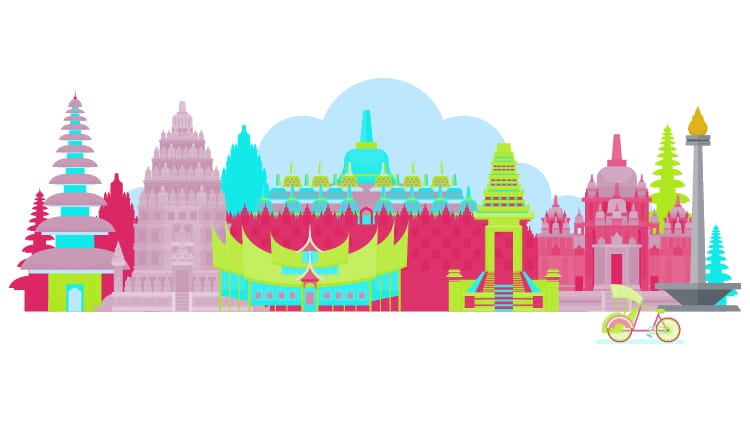
INDONESIA CULTURE
Indonesia Culture
What is culture? How do we get influenced to adopt the ways that we do? According to a sociological definition, culture is shared ways of living learned overtime. We can also say that it is an amalgamation of material and non-material things and ways established overtime within one society and area. Countries hold cultures dear, and for nations, cultural heritage they protect at all costs. Cultures play a huge role in shaping citizens especially Indonesia. The old debate of nature vs nurture is real and we still can’t ignore the fact that every nation has its own traits, material, and non-material culture that help them build their national identity.
Bahasa Indonesia Culture Jakarta
When a country is at a junction of multiple influences, abundant routes, and ethnicity, one can assume a vibrant culture. Indonesia, the land of seventeen thousand islands is known for so many things. Jakarta is the capital and among the largest islands of the country. The popular vacation points. Thousand Islands is also located in Jakarta. The exotic destinations are tourist attractions. Authentic Balinese experience has been the highlight of multiple travels and tourism agencies. Since the country is centrally located between major trading routes, the Indonesian society is a rich blend of different religions and is the true projection of diversity in unity.
Main religions include Islam, Buddhism, Confuscianism, Hinduism, and Christianity. As a result, the Indonesia culture can rather be called unity in diversity than a unique culture of its own.
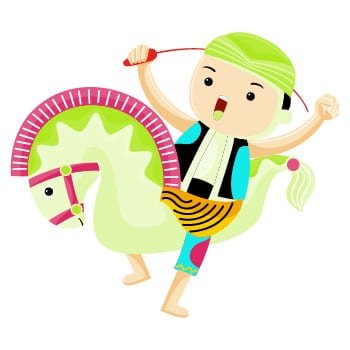
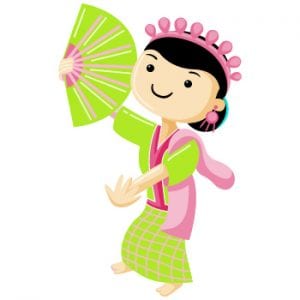

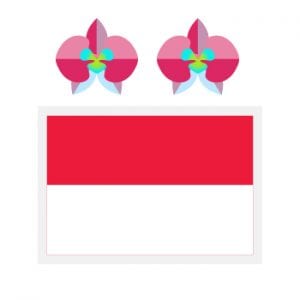
The People and Culture of Indonesia
It might surprise you how much interracial diversity has influenced the practices and events in the country. It is the world’s largest Muslim population, even though there is no shortage of Hindus, Buddhists, and indigenous populations. In Indonesia, culture has adopted a lot from western society. And it has been incorporated its ways into politics, science, and technology. But when it comes to practices and beliefs, the Indian and Hindu effect is more dominant. For example, the Javanese Abagan belief is a unique fusion of Islam and Hinduism.
The dances are inspired and contain stories that are very popular in the region. Traditional art and customs depict hints of a cultural mixture. The entertainment industry takes a lot after Indian cinema.
Music of Indonesia
Yogyakarta, the capital of Java is regarded as the center of classic Indonesian arts. Indonesian traditional music, known as Gamelan came from East Java and Bali. In Gamelan, many traditional instruments are used. Gambang, Saron, Bonang, dengung, etc. are the most common among the instruments used in this genre. Gamelan players play the instruments in classic Yogyakarta style.
Another popular music genre is Kroncong. Kroncong is played using guitar and ukelele. The base of this genre is from Portugal which came around in the region in the 15th century with Portuguese traders. Its contemporary form is called Kroncong Pop.
Angklung Orchestra of West Java is not only popular in the region but also received international acclaim when UNESCO listed a local music instrument made from bamboo as an intangible cultural heritage. When translating songs find out the do’s and don’t.
Dance of Indonesia
Indonesian dances are a depiction of all the cultures merged traditionally over time. There are dances that tell stories of Mahabharata and Ramayana. The dance forms here are heavily inspired by Hindu culture and religion. The Yogyakarta dances are unique and iconic yet local dance forms are also worth exploring. Yogyakarta court dances are even performed on international stages and events.
The Balinese Legong dance is a continuum of elegance and style. Saman dance is getting increasingly popular and is shown more often on TV than before. Reog Ponorogo is a dance from a region known as Ponorogo, located in East Java. The dance is a depiction of a legendary story of the Wengker Kingdom.
The line dance Pocopoco is also famous in Malaysia. However, it was later banned for Muslim concerns as the dance is believed to depict the Christian cross.
Pencak Silat
Indonesian martial arts known as Pencak silat originated in Java and Sumatra. Chinese and Indian touches have further enhanced the moves of this survival practicing a martial art. The Indonesians used Silat to protect themselves during the colonial Dutch rule. However, with time, the youth became interested in the more advanced forms of martial arts such as Taekwondo and Karate.
Silat moves are still learned and performed in European and international exhibitions.
Theater and Drama of Indonesia
The Wayang show is a popular theatrical projection with Sudanese, Balinese, and Javanese puppet shows. Based on different legendary stories, these puppet shows are enjoyed by a large audience.
The puppets are mostly made of sheets. The Minangkabau people of Sumatra also perform a theatrical rendition known as Randai. They usually perform Randai on ceremonial occasions. Bangsawan another folk theatrical presentation belongs to Malay people.
Architecture of Indonesia
The architecture is quite impressive, unique, and distinguishable among other buildings. One notable feature of these buildings is that they are built on stilts. A few of the popular houses include Dayak people in Borneo, Rumagadang of Minangkabau people, and the Rumah Bolon of the Batak people. Some houses are bigger than others. They are ornate. The Torojan houses are decorated with buffalo horns. With the advent of modern technology, however, they started using modern techniques in buildings that are aligned with today’s structures.
Sculpts of Vishnu and Shiva can also be seen in Indonesia.
Clothing & Crafts
Indonesian crafts are internationally recognized for their authenticity. The Batik fabric is known for its intricate details. Villages have been producing multiple items in basketry, weaving, wood art, wood carving, and embroidery. Batik and Kebaya are the most popular costumes here.
Indonesian Cuisine
Known for authentic spices and recipes, the food here is largely derived from Chinese and Hindu recipes. The local cuisine also inspired many dishes in Singapore and Malaysia. West Sumatran cuisine is particularly popular in these places.
The main dish is rice. Lots of vegetables and meat are used in side dishes. Rendang is also a popular dish. In some regions, people eat a form of Tapioca and Sweet potatoes in most of their meals. Most of these foods contain spices, offer a rich taste.
Indonesian People
Natives are also known as Pribumi. Coming down to the nation, cultural values are the most important aspect for them. Family life is highly regarded and most households live with their extended family. They are very particular about beliefs, customs, and traditions. Local traditions are celebrated regardless of religion.
Since the majority is Muslim, the head of the family is considered supreme. Ancestors’ pictures are also hanged in houses as a symbol of respect and tribute. Children are supposed to live with their parents even after marriage. Buddhists and Hindus live with their own traditions and follow their religious practices.
373 languages spoken
Speaking of languages, there are more than 373 languages spoken in the country. You can say there is a language diversity in Indonesia. If we include the indigenous languages, the number could rise to 700. However, Indonesian remains the official language of the country. It is a variant of the Malay language. It is used in offices, courts, schools, media, mass communication tools, etc. The most widely spoken local language is Javanese.
Children’s education is free in state schools. Apart from Muslims, Hindus, and Christians, largest population in the country.
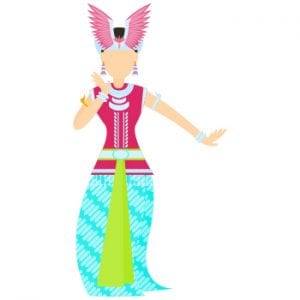
Daily Life in Indonesian Culture
Daily life in Indonesia, a vibrant part of Southeast Asia, is rich with diverse traditions from various Indonesian islands, including West Sumatra, North Sumatra, East Kalimantan, West Timor, East Timor, and West Papua. Balinese culture, with its unique batik designs batik shirts, and the Indonesian language, are integral to everyday activities. The traditional martial arts, Pencak silat, and the historical Borobudur Temple are common sights. Influences from Western cultures, including the East India Company, blend seamlessly with local customs. Renowned literary figures like Pramoedya Ananta Toer and Chairil Anwar highlight the cultural depth. Indonesian youths play traditional games and navigate a wide range of symbolic meanings and beliefs in supernatural entities. This rich cultural tapestry reflects the unique blend of Asian cultures, especially evident in daily life across the eastern islands and throughout Indonesia.
Statues and Sculptures in Indonesian Culture
In Indonesian culture, statues play a significant role in both religious and everyday contexts. Wooden statues and exquisite statues are common, often serving as pool ornament statues or statues of king. Bas-relief sculptures found in many temples depict the cycle of life, honoring both deceased persons and elderly persons. These artistic creations reflect a blend of indigenous traditions and foreign influences, including European influences.
From the 16th century to the 19th century, Indonesian architecture continued to evolve, incorporating more diverse elements and expanding in complexity. This period saw the construction of larger temple complexes and the introduction of new architectural styles, further enriched by European and foreign influences. The 20th century marked a significant era of modernization, yet the traditional elements of Indonesian architecture, guided by the Ministry of Trade, remained deeply rooted in its cultural and historical context.
Indonesian Cultural and Historical Tapestry
Indonesia’s cultural and historical tapestry is woven with diverse threads from its many islands, including East Kalimantan, East Timor, and West Papua. The traditional martial art of Pencak silat exemplifies the rich heritage of Indonesian youths, while the intricate batik designs and batik shirts highlight the country’s artistic expression. Literary figures such as Pramoedya Ananta Toer and Chairil Anwar have immortalized the nation’s struggles and triumphs in their works.
The influence of Western cultures, particularly during the 15th century with the presence of the East India Company, is evident in various aspects of Indonesian life. Architectural styles from the 1st century showcase a blend of indigenous and foreign elements, with statues of king and significant figures honoring deceased and elderly persons. These statues, often found in common sights across the islands, embody symbolic meanings and beliefs in supernatural entities.
Indonesian traditional games remain a cherished part of daily life, reflecting the cultural vibrancy and communal spirit. The country’s eastern islands, with their unique customs and practices, further enrich this cultural mosaic, making Indonesia a captivating study of historical depth and contemporary vitality.
Indonesian architecture showcases a rich tapestry of styles and influences spanning from the 1st century to the 20th century. The 8th-century Borobudur temple stands as a magnificent Buddhist temple, while Hindu temple architecture is evident in larger temple complexes and ancient temples throughout the region. Notable sites include East Nusa and East Nusa Tenggara, which are home to many such architectural marvels.
Influence and Administration
The Indonesian Ministry of Trade has played a role in preserving and promoting Indonesia’s rich architectural heritage. Integrating foreign architectural styles with traditional Indonesian elements highlights the country’s historical openness to outside influences while maintaining its unique cultural identity. This blend of influences is a testament to Indonesian architecture and culture’s dynamic and evolving nature through the centuries.
Government Influence
The Indonesian government plays a pivotal role in preserving and promoting the country’s cultural heritage. Through initiatives supported by the Ministry of Trade, efforts are made to safeguard ancient temples and statues of kings, which are symbolic of Indonesia’s rich history and religious practices. These efforts reflect a commitment to honoring traditional values amidst modernization and foreign influences.
Indonesia’s colonial past, particularly under Dutch rule, left a lasting impact on its cultural landscape. The colonial government’s policies shaped the architecture and governance structure in regions like West Java and West Sumatra, blending indigenous traditions with European influences. This historical amalgamation continues to influence Indonesian culture, highlighting the resilience and adaptability of its people.
Rich Heritage of Indonesian Islands
The Indonesian islands, encompassing regions like West Sumatra, West Papua, West Timor, and West Java, showcase a rich cultural heritage influenced by various historical and modern elements. The architectural style of iconic landmarks such as the Borobudur Temple reflects ancient craftsmanship and religious significance. The influence of Western cultures, notably from the era of the East India Company, is visible in some architectural designs and cultural practices. Common sights across these islands include intricate batik designs, which are deeply symbolic and worn by both the young and the elderly. Statues honoring deceased persons and elderly individuals highlight the deep respect for ancestors and traditions in Indonesian society.
European Influences in Indonesian Art
European influences have left a profound impact on Indonesian art, influencing painting styles, sculpture techniques, and artistic expressions. Dutch and Portuguese traders introduced Western art forms that blended with indigenous motifs and cultural practices, creating a unique visual language. This cultural exchange continues to shape contemporary Indonesian art scenes, reflecting a synthesis of Eastern and Western artistic sensibilities.
In North Sumatra, colonial-era art schools and galleries promoted European painting techniques among local artists, fostering a new generation of Indonesian painters. The Ministry of Trade supports art preservation initiatives that highlight Indonesia’s artistic diversity and historical connections with European cultures, ensuring these cultural treasures endure for future generations.
Exploring Cultural Legacies in Maritime Southeast Asia
The 8th-century era of Maritime Southeast Asia left behind a rich legacy, epitomized by the iconic Borobudur Temple. This architectural marvel showcases notable Indonesian Hindu-Buddhist sculptures and Hindu-Buddhist-style stone sculptures, revered for their intricate craftsmanship and symbolic meanings, often depicting supernatural entities. Amidst this cultural tapestry, Indonesian youths embrace their heritage through traditional games and by donning vibrant batik shirts. Meanwhile, statues paying homage to elderly and deceased individuals underscore the profound respect for ancestors that permeates the region’s traditions and customs.
Legacy of 8th-Century Maritime Southeast Asia
The legacy of 8th-century Maritime Southeast Asia is preserved in the region’s ancient temples and archaeological sites, such as those in Java Valley and North Sumatra. These historical landmarks reflect the cultural exchanges and maritime trade networks that shaped Southeast Asian civilizations. The Ministry of Trade supports archaeological expeditions and heritage conservation efforts to uncover and protect this rich cultural heritage.
Maritime Southeast Asia’s strategic location facilitated cultural interactions between Indian, Chinese, and Arabian traders, influencing art, architecture, and religious practices. Today, these ancient temples stand as testaments to Southeast Asia’s cultural diversity and historical significance, contributing to global understanding of the region’s maritime history.
Javanese Cultural Resilience
Javanese culture stands as a testament to Indonesia’s diverse heritage and cultural resilience. Influenced by Hindu-Buddhist traditions and later Islamic values, Javanese cultural practices are deeply rooted in religious rituals and artistic expressions. The Ministry of Trade supports initiatives to preserve Javanese art forms, such as wayang puppetry and batik textiles, ensuring their continued relevance in contemporary Indonesian society.
The influence of Javanese culture extends beyond art and religion, shaping political and social structures throughout Indonesia’s history. Today, Javanese cultural practices, including traditional ceremonies and community gatherings, remain integral to local identities across the archipelago. This cultural richness underscores Indonesia’s commitment to celebrating diversity while maintaining a cohesive national identity.
Western Sumatra’s Cultural Tapestry
West Sumatra’s cultural tapestry reflects a blend of indigenous traditions and foreign influences, notably from English and Portuguese traders in the 20th century. The region’s architecture, characterized by ornate Rumah Gadang houses and ancient temples, showcases a unique synthesis of Hindu-Buddhist and Islamic architectural styles. The Ministry of Trade supports efforts to preserve these architectural marvels, ensuring they remain vital to local identity.
Traditional Minangkabau ceremonies and culinary arts, such as rendang cuisine, exemplify West Sumatra’s cultural vibrancy. These practices are deeply intertwined with local customs and beliefs, reflecting a reverence for ancestral traditions amidst a changing world. By celebrating its rich cultural heritage, West Sumatra continues to inspire artistic expression and community cohesion across Indonesia.
Cultural Legacy of West Java
West Java’s cultural legacy spans centuries, shaped by indigenous traditions and foreign influences. The region’s ancient temples, adorned with intricate statues of kings and symbolic motifs, attest to its rich historical and religious significance. The Ministry of Trade supports initiatives to preserve these cultural landmarks, ensuring they serve as educational resources and tourist attractions.
The influence of English and Portuguese traders in West Java during the colonial era introduced new artistic techniques and architectural styles, enriching the region’s cultural fabric. Today, traditional Javanese art forms, such as gamelan music and wayang puppetry, thrive alongside modern innovations, illustrating West Java’s dynamic cultural evolution. This blend of heritage and innovation underscores the region’s enduring cultural vitality.
Cultural Significance of Java Valley
Java Valley holds immense cultural significance in Indonesia’s history, housing 8th-century ancient Javanese temples and statues of kings. These archaeological treasures, such as those found in Borobudur and Prambanan, reflect Indonesia’s Hindu-Buddhist heritage and attract tourists and scholars alike. The Ministry of Trade supports efforts to preserve Java Valley’s cultural sites, ensuring they continue to inspire generations with their architectural grandeur and historical richness.
The temples in Java Valley represent larger temple complexes that serve as spiritual centers and artistic masterpieces. Their intricate designs and symbolic carvings depict stories from ancient Javanese mythology, showcasing the region’s cultural evolution amidst European influences and global trade routes.
Cultural Diversity in West Timor
West Timor’s cultural diversity is shaped by indigenous traditions and external influences from neighboring regions. The region’s unique blend of animist beliefs and Christian practices reflects centuries of cultural exchange and adaptation. The Ministry of Trade supports initiatives to preserve West Timor’s traditional crafts, such as ikat weaving and wood carving, ensuring these artistic traditions endure for future generations.
Colonial governments, including Portuguese and English administrations, left a lasting impact on West Timor’s cultural identity, influencing language, religion, and governance structures. Today, local festivals and rituals celebrate the region’s rich cultural heritage, fostering community pride and resilience amidst modern challenges. West Timor’s cultural tapestry serves as a testament to Indonesia’s diversity and cultural unity.
Artificial Intelligence in Cultural Preservation
The integration of artificial intelligence (AI) in cultural preservation initiatives marks a new era for Indonesia’s heritage conservation efforts. AI technologies are employed by the Ministry of Trade to digitally archive ancient temples and statues of kings, ensuring their preservation and accessibility for future generations. This innovative approach combines traditional conservation methods with cutting-edge digital solutions.
AI-driven cultural mapping projects enable comprehensive documentation of Indonesia’s diverse cultural landscapes, from architectural sites to indigenous crafts. By leveraging AI, Indonesia enhances its capacity to safeguard cultural assets against natural disasters and human impacts, promoting sustainable tourism and cultural education. The Ministry of Trade continues to spearhead AI initiatives that uphold Indonesia’s cultural legacy in the digital age.
Preservation of Exquisite Statues
The preservation of exquisite statues in Indonesia is a testament to the country’s rich artistic heritage and cultural resilience. Statues of kings and mythical figures, found in ancient temples across Java Valley and North Sumatra, embody Indonesia’s spiritual beliefs and historical narratives. The Ministry of Trade implements conservation projects to protect these statues from environmental degradation and human impact, ensuring their longevity as cultural artifacts.
These statues, crafted with intricate details and symbolic meanings, serve as educational resources and tourist attractions, attracting visitors from around the world. By safeguarding these exquisite statues, Indonesia preserves its cultural identity and promotes global awareness of Southeast Asia’s artistic legacy.
Influence of Western Culture
Western culture has significantly influenced Indonesian society, particularly through trade interactions and colonial legacies. European influences introduced new artistic techniques, architectural styles, and governance systems that coexist with indigenous traditions. This cultural fusion is evident in Indonesian literature, music, and culinary arts, reflecting a dynamic blend of Eastern and Western aesthetics.
In North Sumatra, for example, Dutch colonial architecture and Christian influences have left a lasting mark on the region’s urban landscape and cultural practices. The Ministry of Trade promotes cultural preservation initiatives that celebrate Indonesia’s multicultural identity while honoring its historical ties with Western cultures.
Influence of Latin American Cultures
The influence of Latin American cultures on Indonesia’s artistic and culinary traditions underscores the country’s global cultural connections. Trade relations and cultural exchanges with Latin American countries have enriched Indonesian cuisine with new flavors and cooking techniques, influencing local dishes and culinary practices. The Ministry of Trade supports cultural diplomacy efforts that strengthen ties between Indonesia and Latin America, fostering mutual understanding and appreciation.
Indonesian adaptations of Latin American music and dance genres, such as salsa and samba, have gained popularity among youth and urban communities. These cultural imports resonate with Indonesian audiences, blending seamlessly with local artistic expressions. By embracing Latin American influences, Indonesia celebrates cultural diversity and promotes cross-cultural dialogue on a global scale.
Colonial Government Legacy
The legacy of colonial governments in Indonesia continues to shape its cultural landscape, influencing governance structures, legal systems, and architectural styles. Dutch and Portuguese administrations introduced Western influences that coexist with indigenous traditions, creating a unique cultural tapestry. The Ministry of Trade supports efforts to preserve colonial-era buildings and artifacts, which serve as historical landmarks and cultural heritage sites.
Colonial-era policies also contributed to socio-economic disparities and cultural assimilation processes that persist in Indonesian society today. By acknowledging this complex legacy, Indonesia navigates a path towards cultural reconciliation and preservation of diverse identities. The country’s cultural resilience reflects a blend of historical continuity and contemporary adaptation, guided by lessons from its colonial past.
English – Portuguese Cultural Exchange
The cultural exchange between English and Portuguese traders in Indonesia fostered a dynamic fusion of artistic, linguistic, and culinary traditions. This cultural interchange enriched Indonesia’s cultural mosaic with new musical instruments, architectural styles, and culinary techniques. The Ministry of Trade promotes cultural tourism that highlights Indonesia’s English-Portuguese heritage, encouraging global appreciation and preservation.
Indonesian adaptations of English and Portuguese languages influenced local dialects and linguistic diversity, contributing to Indonesia’s multicultural identity. Today, historical artifacts and cultural artifacts from this era are preserved in museums and heritage sites, offering insights into Indonesia’s colonial history and cultural evolution. The English-Portuguese legacy continues to inspire artistic creativity and cultural dialogue across the archipelago.
Role of English – Portuguese in Cultural Exchange
The role of English – Portuguese in cultural exchange is pivotal for Indonesia’s engagement with global audiences and Latin American partners. Translation technologies facilitate accurate interpretations of historical texts and artifacts, enhancing mutual understanding and collaboration in heritage preservation. In Java Valley and North Sumatra, English – Portuguese translations enable international scholars to access and interpret ancient inscriptions and archaeological findings, enriching global knowledge of 8th-century ancient Java.
The Ministry of Trade supports language education initiatives that promote proficiency in English – Portuguese among Indonesian students and professionals. By fostering linguistic diversity and cultural dialogue, Indonesia strengthens its diplomatic ties with Latin America and contributes to global efforts in preserving and promoting shared cultural heritage.
Preserving Ancient Temples
The preservation of ancient temples in Indonesia is a priority for the Ministry of Trade, which oversees efforts to protect these architectural marvels from natural decay and human impact. Ancient temples, such as Borobudur and Prambanan, stand as testaments to Indonesia’s rich Hindu-Buddhist heritage, attracting visitors from around the world. Through conservation projects and educational initiatives, Indonesia ensures these cultural treasures endure for future generations.
The Ministry of Trade collaborates with international partners and cultural institutions to implement best practices in temple conservation and heritage management. Advanced technologies and traditional craftsmanship are employed to maintain the structural integrity and historical significance of these iconic landmarks. By safeguarding ancient temples, Indonesia reaffirms its commitment to preserving its cultural heritage and promoting global cultural exchange.
Larger Temple Complexes in Southeast Asia
Southeast Asia is home to larger temple complexes that showcase the region’s architectural achievements and religious diversity. From Java Valley to North Sumatra, these expansive temple sites, such as Borobudur and Prambanan, embody Southeast Asia’s spiritual traditions and artistic ingenuity. The Ministry of Trade supports initiatives to preserve these larger temple complexes as UNESCO World Heritage sites, safeguarding their cultural significance for future generations.
These temple complexes serve as pilgrimage destinations and cultural landmarks, attracting visitors from around the world to marvel at their monumental architecture and intricate carvings. Through conservation efforts and educational programs, Indonesia promotes global awareness of Southeast Asia’s ancient civilizations and their enduring cultural legacies.
Translation Challenges in Cultural Preservation
English translations play a crucial role in cultural preservation efforts in Indonesia, ensuring accurate interpretations of historical texts and cultural artifacts. The Ministry of Trade advocates for precise translations between English, Portuguese, and Indonesian languages to maintain authenticity and clarity in educational materials and museum exhibitions.
Cultural institutions across Southeast Asia face challenges in translating indigenous languages and dialects into global languages, requiring collaboration with linguistic experts and technology-driven solutions. By overcoming these translation challenges, Indonesia enhances international appreciation for its cultural heritage and promotes cross-cultural dialogue on a global scale.
Hindu Temples in Southeast Asia
Hindu temples across Southeast Asia, including Indonesia, symbolize the region’s rich religious heritage and artistic craftsmanship. From North Sumatra to West Java, these temples serve as spiritual sanctuaries and architectural marvels, attracting pilgrims and tourists alike. The Ministry of Trade collaborates with international partners to safeguard Hindu temples, ensuring their preservation as UNESCO World Heritage sites.
The intricate carvings and exquisite statues found in Hindu temples depict mythological tales and spiritual teachings, offering insights into ancient Southeast Asian civilizations. Through cultural exchange programs and heritage conservation efforts, Indonesia honors its diverse religious traditions and promotes global appreciation for Southeast Asia’s cultural legacy.
Cultural Significance of Hindu Temples
Hindu temples hold profound cultural significance in Indonesia, especially in larger temple complexes like those in Java Valley and North Sumatra. These temples, dating back to 8th-century ancient Java, showcase exquisite statues of Hindu deities and mythical figures, embodying Indonesia’s rich spiritual heritage. The Ministry of Trade supports conservation efforts to preserve these sacred sites as cultural treasures and UNESCO World Heritage sites, ensuring their continued significance for Indonesian people and global visitors alike.
The intricate carvings and architectural marvels of Hindu temples reflect centuries of artistic craftsmanship and religious devotion in Southeast Asia. These temples serve as spiritual sanctuaries and centers of cultural identity, attracting pilgrims and scholars to study Indonesia’s cultural evolution amidst European influences and global trade routes.
Impact of Translation Software
The advent of translation software has revolutionized language accessibility in Indonesia, facilitating accurate translations between English, Portuguese, and Indonesian languages. This technology supports cultural exchanges with Latin America and enhances communication across diverse linguistic landscapes. However, ensuring accurate translations remains crucial for preserving cultural nuances and historical contexts in literary works and official documents.
In Southeast Asia, including Indonesia, translation software bridges language barriers and promotes regional cooperation in commerce and diplomacy. The Ministry of Trade advocates for the use of reliable translation tools to facilitate international trade and cultural diplomacy, fostering mutual understanding and collaboration with Western cultures.
Cultural Integration Through Translation Software
Translation software facilitates cultural integration in Southeast Asia by bridging linguistic barriers and promoting mutual understanding among diverse communities. In Java Valley and North Sumatra, translation technologies enable accurate interpretations of ancient texts and archaeological findings, enhancing scholarly research and cultural exchange initiatives.
The Ministry of Trade collaborates with tech companies to develop AI-powered translation tools that preserve Southeast Asia’s linguistic diversity and cultural heritage. By embracing digital innovation, Indonesia fosters cultural diplomacy and educational outreach programs that highlight the region’s cultural integration and historical connections with global civilizations.
Frequently Asked Questions
What are some famous landmarks that showcase Indonesia's cultural heritage?
Indonesia boasts numerous landmarks that reflect its rich cultural heritage, including the Borobudur Temple, Prambanan Temple, and the ancient Hindu-Buddhist sculptures found throughout the archipelago.
How diverse is the cultural landscape of Indonesia?
Indonesia is incredibly diverse culturally, with each region boasting its own unique traditions, languages, and customs. From the vibrant traditions of West Sumatra to the mystical rituals of West Papua, the cultural diversity is vast and fascinating.
What role do traditions and customs play in Indonesian society?
Traditions and customs are central to Indonesian society, serving as the foundation of community life and identity. They encompass everything from elaborate ceremonies and rituals to everyday practices and social norms, reflecting the values and beliefs of the Indonesian people.
How does contemporary Indonesia blend traditional culture with modern influences?
Contemporary Indonesia embraces its rich cultural heritage while also incorporating modern influences in art, music, and literature. Traditional dance forms are revitalized, while local and global influences merge in popular culture, creating a dynamic and ever-evolving cultural landscape.
What efforts are being made to preserve and promote Indonesia's cultural heritage?
Various initiatives, including cultural festivals, heritage preservation efforts, and educational programs, are underway to preserve and promote Indonesia’s cultural heritage. These efforts aim to celebrate the country’s diverse traditions and ensure that they are passed down to future generations.

